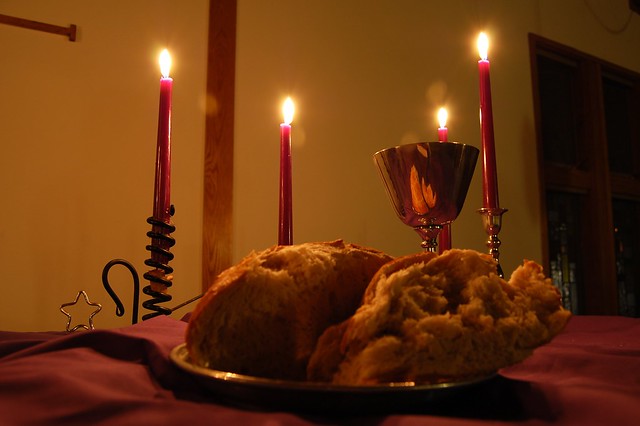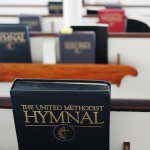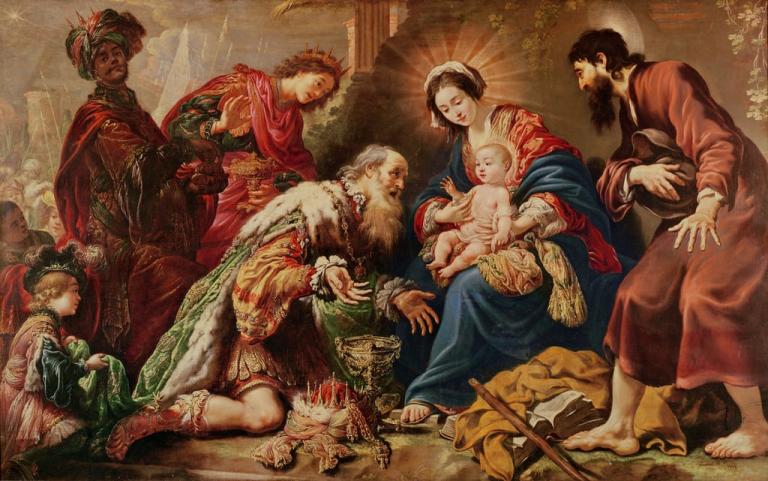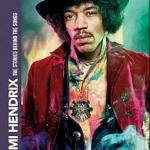
“If music is to fulfill its intended purpose in worship, it has to be understood as an important medium through which the various components of worship retell the Christian story. If singing fails to communicate the church’s metanarrative or to reinforce the church’s basic identity as the covenant people of God, then worship has fallen short of being a “divine office.” The real reason we worship is that we are a people shaped by the Christian story. If this is so, can we simply entrust our worship to worship leaders who have no such understanding?” – Simon Chan, Liturgical Theology: The Church as Worshiping Community
A lot of us worship like Jesus was born around the time “Gilligan’s Island” went off the air. You know, it was a while ago, not too far back, but well before I came on the scene. It lingers vaguely in our collective cultural subconscious.
But we are a people with a story. A long, beautiful story.
When I first read this passage from the Chan book in 2007, something about that penultimate sentence didn’t sit well. Because we’re part of the story?!? Don’t we worship simply because God is worthy? Well, sure. But when we we’re worshiping corporately, we’re doing so as a collective group, and not just any group, but a chosen people in our Sunday asylum.
Yes, God is worthy, but we know that because we’re caught up in this grand plan of creation, fall, and ultimate resurrection.
When we gather for worship, we’re not just expressing ourselves to God. It’s not that God needs some ego stroking from us every so often. It’s not about connecting with on some personal wavelength. It’s not about feeling passionate or emotional or “in love” with God.
It’s about retelling our story. A true story. A story that most churches don’t really tell. A story many of us don’t know particularly well.
That’s the beauty of the historic Christian liturgy. Week after week, season after season, year after year, we participate as new covenant people in the drama of salvation history. Our history. It’s not supposed to be fun. It’s not supposed to just be inspiring. It’s not supposed to produce intense emotional response. It’s not supposed to make all our problems go away. It’s a microcosmic, disciplined, anticipatory remembrance of who we were, who we are, and who we are to be.
Even the historic order of worship is shaped by the covenant relationship.
Entrance, proclamation, thanksgiving, sending.
Gathering, proclaiming, breaking bread, returning.
Every time.
Each time we repeat the process, we retell how God has called us out of a hostile place, and in the midst of the continuing chaos has brought his kingdom near to us, and we return into the world as a missional, kingdom people.
And this shapes us. It refocuses us. It reorients us after a week in the dizziness of life. It gives us the sacred repetition we so desperately need (and so rebelliously avoid) to be kingdom people in an ugly world. It unites us beyond the superficiality of entertainment and cultural milieu. It allows us to orient our lives around a cycle of our sacred texts, instead of the latest and greatest in pastoral banality, sentimentality, and pop psychologizing. And it reminds us that we are in this together, as a group, preparing in earnest for the gravity in the situation on the outside.
The ancient model of lex orandi, lex credendi is alive and well in the liturgy. As we worship, so we believe.
Music gives us a unique medium for retelling the story in fresh, creative, sensory ways. As Chan says, “Praise, thanksgiving and proclamation of the wonderful works of God are better sung than said.” Well-crafted, well-chosen music gives teeth to the truth of the gospel. Even old familiar songs, if they’re any good to begin with, tell the Christian story afresh, as every time they’re sung, the message is re-contextualized in our communal experience.
But tragically that’s been lost in the false dichotomy. Worship has become about hearing music that you like. We either want our good old favorites or a Christianized version of the latest, greatest, and hippest commercial trend
. We call it “worship music,” but that’s not really what it is. It easily becomes pure and simple entertainment, and usually a derivative, affected, kitschy attempt, at that.
No matter what we claim, far too often our “worship” has become narcissistic, masturbatory, self-referential.
Really, what did we expect to happen?
Instead of choosing music that nobly carries the truth of the gospel story, we’ve become slaves to a chosen entertainment medium.
Instead of inseparable Word and sacrament, we’ve diluted the historic liturgy into two, often unrelated parts of the service: “worship” and preaching.
The first derives from a fundamental misunderstanding of gathered worship that says, “I’m here to connect with God individually.” Instead of every piece of music having its own function in the Christian drama, it’s included in a generic grouping of songs usually focused on individual self-expression. No more orders, we have “sets:” which remind me of being trapped in a hot, crowded wave pool for 30 or 45 minutes. Then, since one song is about as valuable as any other, we might as well just choose a service based on the genre of music, often called the “worship style.”
Contemporary worship has definitely exacerbated this problem, but it didn’t start with the Jesus movement or the charismatic revival. It started when liturgy was exchanged for evangelistic meetings. So, if the main purpose of the service was to get people in and get them “saved,”we might as well choose music that could help make that happen. And we might as well get rid of those more “churchy” items. You know, the creeds, responsive prayers, that sort of stuff. And so we might also just put a lot of the music together in one place and have an extended time of jesusy euphoria before the “preaching.”
And though this mindset is still pervasive in contemporary services, many traditional churches have been doing it for years. When I was growing up, I used to love going to churches that sang hymns from the hymnal. There was usually no real rhyme or reason behind the hymns, other than perhaps vaguely following the preaching theme for that Sunday. I remember one Sunday in particular when attending a church with extended family. The order of worship went something like this:
Prelude
Welcome and Announcements
Hymn No. 435 – He Keeps Me Singing
Hymn No. 447 – Sunshine in My Soul
Hymn No. 473 – Heavenly Sunlight
Hymn No. 324 – Higher Ground
Hymn No. 325 – Footsteps of Jesus
Offertory
Hymn No. 354 – Near to the Heart of God
Special Music (It’s never really that special…)
Sermon
Hymn of Invitation No. 187 – Just As I Am
Prayer
Postlude
There’s no retelling. There’s no function behind anything. Just the 19th-century revival meeting format with a long sequence of old favorites. And though my Southern Baptist roots tie me emotionally to gospel hymnody, theologically, I can’t say that this kind of service is much different than its supposed alternative.
The lie of advertising in our culture is pitting one thing up against another slightly different thing and suggesting you have real options. “Buy our burger because it’s so much better than everyone else’s burger.” But in our worship warring, we’ve often done just that. Instead of minding our own business and retelling the Christian story, we’ve tried to attract people by making the ludicrous suggestion that they really have a choice at all.
As church musicians, we must know enough about the story to choose music that tells it well. That doesn’t mean we have to all be theological heavyweights, but if you’re like so many worship leaders, and are of the mindset that you just love God, but don’t care about that “theology stuff,” you should resign. And those of us who do care deeply need to always be learning, so we can tell the same beautiful story in fresh and creative ways, without resorting to the commercial worship “industry.”
It should be no surprise to us that as we’ve been using our services to attract people, we have compromised so much of who we are that we don’t even recognize ourselves anymore,
It’s time to be liturgical.
It’s time to be missional instead of seeker-sensitive.
It’s time to throw out the stupid and insulting “traditional” and “contemporary” categories, and instead embrace beauty and artistry.
It’s time we stop worshiping the past or the present, and be an ancient/future people.
It’s time we get back to telling our story.

Stay in touch! Like Ponder Anew on Facebook:


















